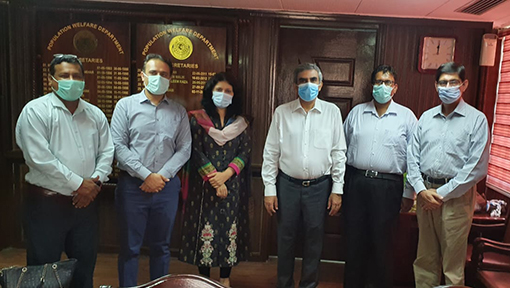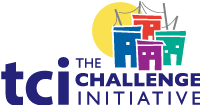Pakistan: Advocacy
- Home
- Help and Support
- Close
- Toolkits
- Global Toolkit
- AYSRH Toolkit
- Hub Toolkits
- Core High-Impact Practices
- Gender Essentials Mini Course
- Close
- Resource Collection
- Community of Practice
- Coaching
- Log In/Register
- My Profile
- English
Advocacy at the Sub-National Level
 Advocacy at the sub-national level in Pakistan refers to engagements with influential people in the federal, provincial and local governments, district committees, as well as influential figures in the community to support family planning and reproductive health (FP/RH), including adolescent and youth sexual and reproductive health (AYSRH). These influential figures can vary from politicians to community leaders (head of a jirga), an Imam of a mosque, a pastor or mahraj of a temple. Garnering the support of these figures helps to ensure an enabling environment for family planning and reproductive health.
Advocacy at the sub-national level in Pakistan refers to engagements with influential people in the federal, provincial and local governments, district committees, as well as influential figures in the community to support family planning and reproductive health (FP/RH), including adolescent and youth sexual and reproductive health (AYSRH). These influential figures can vary from politicians to community leaders (head of a jirga), an Imam of a mosque, a pastor or mahraj of a temple. Garnering the support of these figures helps to ensure an enabling environment for family planning and reproductive health.
In Pakistan, influence and power dynamics run through generations. The political system is formed through influence of political parties and of the influential families/notables. Generally, these individuals have their roots in their constitutencies as they are in charge for decades as their leadership is passed down from family member to family member for generations. Regarding influential figures in the community, generally, religious figures take precedence over people in political decision-making roles, especially related to health-related campaigns. Advocacy at the sub-national level enables people to develop rapport with influential figures whose influence can create change, overcoming cultural norms that restrict access to family planning information and the uptake. Hence, advocacy efforts targeting these influential figures play an important role in reducing cultural barriers and promoting an enabling environment.
What are the benefits of advocacy at the sub-national level?
- Provides updated and authentic information on the economic and health benefits of family planning/AYSRH to elected officials at the local level
- Helps local leaders make informed choices about population and family planning/AYSRH policies using data from their community
- Allows local governments to make commitments to prioritize resources for family planning/AYSRH at the regional, provincial, district, and village levels
- Ensures that Government at all levels follows through on family planning/AYSRH commitments , reducing dependence on donors and the national Government
- Builds a supportive and conducive environment for family planning/AYSRH by encouraging community ownership and by helping to scale-up effective programs
- Fosters harmony between local leaders and communities to advocate for a health belief model for family planning/AYSRH
How to implement
Step 1: Identify key stakeholders at the defined sub-national level
- Identify influential figures from Ministry of Health, Ministry of Population Welfare Department in your respective provinces and districts, and finance at the sub-national level as key focal persons to target with advocacy messages about family planning being an essential health service and a cost-effective and impactful intervention.
- Conduct orientation on family planning concepts and issues among key stakeholders to clear their misconceptions and myths about birth spacing and contraceptives. With clear pictures, these influential figures can play a pivotal role in community buy-in and mobilization.
- Keep in mind the budget cycle process when you engage key stakeholders at the sub-national level. Your advocacy efforts related to increasing funding support to family planning and AYSRH should start in February and March, given that budget announcements are made in July.
Step 2: Identify allocated budgets for advocacy activities from existing national and provincial budgets
- In Pakistan, the fiscal year starts in June. Every year, the governments (federal and provincial) sit on their respective budgetary requirements and develop budgets for approval. In June, the government announces the budgets allocated to various areas and implementation begins in July.
- In the current year’s PSDP 2021-2022, PKR 21.7 billion has been allocated to the Ministry of National Health Services, Regulation, and Coordination for 40 new and ongoing schemes. This is a 50% increase from the budget allocated to the Ministry last year. Since COVID-19, there has been a suggested increase in the health budget. You can identify what activities are budgeted and plan Advocacy Working Group (AWG) activities accordingly.
Step 3: Form or leverage existing Advocacy Working Group (AWG)/Technical Working Group (TWG)
- Referred to by different names – such as an Advocacy Working Group (AWG), Advocacy Core Group, or District Working Group – these groups include individuals identified in Step 1. Pakistan has various technical working groups (TWGs) in both public and private heath sectors working in different health areas. For example:
- In Sindh, an FP2030 group and subgroups are working to develop programs and policies on family planning and childbirth spacing.
- At the federal level, a Country Engagement Working Group (CWG) is also working on the Council of Common Interests (CCI) recommendations (three of which are exclusively on family planning). There is another TWG that works on commodity security and ensures adequate contraceptive supply along with other medicines across the country.
- Where a technical working group doesn’t exist, designate an exclusive one for family planning and AYSRH issues, which will allow members to work as a community voice for policy change. The working group will be a way to engage with key decision-makers, build consensus and secure funding and support for family planning and AYSRH.
- Form a budget task team to support and influence budget processes and decisions within this group.
- Leverage the existing technical working groups at the national and provincial levels for experiential learning exchange visits with the newly designated one at the community level and support capacity strengthening of the community so that it can effectlivey liaise with those at the at the national and provincial levels.
Step 4: Convene regular meetings with the AWG/TWG
- Hold monthly meetings or more often if needed.
- During these meetings, share relevant provincial and local data with the group from the district committees, including:
- Unmet need for family planning in the area
- Family planning commodity needs of the area
- Evidence related to infrastructure, facilities, equipment, and human resources
- Evidence of the impact of strengthening family planning services in nearby areas (if available)
- During these meetings, develop a consensus about pressing issues in the given area and what the group will advocate, such as additional funding.
Step 5: Design and implement your advocacy strategy
- Now that you have adequate resources and existing data evidence coming from the district committees, convene a meeting with the AWG/TWG to develop a site-specific advocacy strategy.
- Develop a specific budget for the required activities in the area to advocate family planning and AYSRH.
- Develop SMART goals for your advocacy and implementation activities against the budgeted line items.
- Conduct pre-sensitization meetings with community leaders to kickstart the advocacy activities.
Step 6: Hold advocacy trainings to increase the skills and competencies of AWG members
- Train AWG members on various advocacy tactics, ensuring that they are culturally appropriate to the context.
- Train members on budgeting, financing and financial reporting.
Step 7: Develop and use advocacy materials
- Prepare appropriate advocacy materials such as fact sheets, briefs, and presentations that will meet the decision-maker’s needs, focusing on the latest evidence in your area. Meet the decision-makers where they are, and be creative.
- Think about using stories, photos, infographics, videos, and data and facts, to communicate your message. Be specific, direct, and succinct; many of these decision-makers may not have a solid technical background in family planning or have little time. Most importantly, concentrate on the “ask” – what do you want the decision-makers to do?
- Using data is a critical element of advocacy materials. TCI has found much success in using data effectively for advocacy and decision-making.
- Advocacy materials can be city-specific and used to stimulate community dialogue.
- Think about when, where, and how you will deliver the message. What kind of response do you expect from your audience, and how will you address their concerns?
Step 8: Follow-up and monitor advocacy efforts
- Convene quarterly review meetings to assess achievements, review any existing and foreseeable setbacks of the AWG/TWG and the budget task team. Shift activities as necessary.
- Hold annual site-specific implementation review meetings and field visits.
- Scale-up successful interventions to other areas as you identify them.
- Work with AWG/TWG members and others (e.g., community organizations, religious organizations) to ensure the sustainability of advocacy efforts.
- Track budgets to assess the inclusion of family planning/AYSRH as a budget line item.
TCI APP USERS PLEASE NOTE
You will only receive CERTIFICATES by email – when earning a score above 80% – and will not be able to view or print a certifcate PDF from the TCI app.
Test Your Knowledge
Earn a Certificate
Quiz Summary
0 of 3 Questions completed
Questions:
Information
You have already completed the quiz before. Hence you can not start it again.
Quiz is loading…
You must sign in or sign up to start the quiz.
You must first complete the following:
Results
Results
0 of 3 Questions answered correctly
Your time:
Time has elapsed
You have reached 0 of 0 point(s), (0)
Earned Point(s): 0 of 0, (0)
0 Essay(s) Pending (Possible Point(s): 0)
Categories
- Not categorized 0%
- 1
- 2
- 3
- Current
- Review
- Answered
- Correct
- Incorrect
-
Question 1 of 3
1. Question
Advocating at the sub-national level is an important given that influential figures have a lot of sway in the communities that they serve.
CorrectIncorrect -
Question 2 of 3
2. Question
A key target of sub-national advocacy is financial staff and other budget decision-makers to ensure adequate funding for family planning interventions.
CorrectIncorrect -
Question 3 of 3
3. Question
What should be discussed at regular Advocacy Working Group meetings?
CorrectIncorrect
Pakistan Advocacy Interventions
Tips
- Identify local and affluent community leaders to serve as members of the AWG/TWG to ensure ownership and in-depth understanding of issues.
- Be patient. Avoid asking for too many things at once at advocacy meetings. Present one specific “ask” – for example, adding a budget line item to the district budget.
- Engage with community members about issues that may be unclear – for example, private provision of contraception, use of or demand for long-acting methods, etc.
- Adapt your messages to the needs of different decision-makers and influential figures.
- When working with decision-makers who are unsupportive of family planning/AYSRH, think about what might motivate them to change their mind. For example, you can frame family planning/AYSRH in terms of family health, child health, or economic empowerment and development.
- It is essential to build rapport with the lower clerical staff to reach the top management in the government sector.
Challenges
- To overcome barriers related to staffing changes within Government, you can advocate for the inclusion of family planning/AYSRH in the sub-national five-year strategic plans. This can help ensure government commitments for family planning/AYSRH, even when new staff join.
- Advocacy is a continual process, and you may not see immediate results. It is important to focus on “quick wins” to keep momentum – small achievements leading up to your larger goal.
- It can often be hard to get decision-makers to meet with you or listen to your message. Identifying the best messenger – perhaps it is someone on their staff – is often just as important as identifying the decision-makers themselves.




